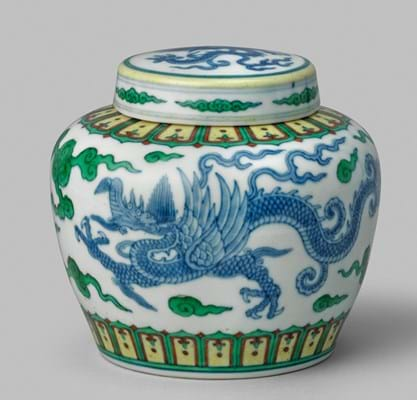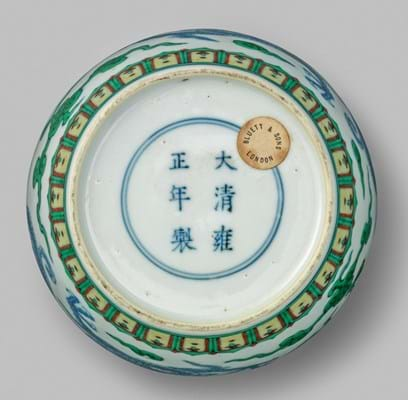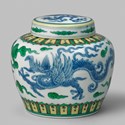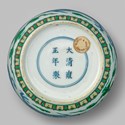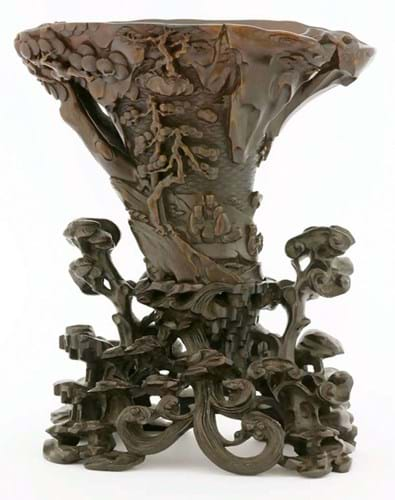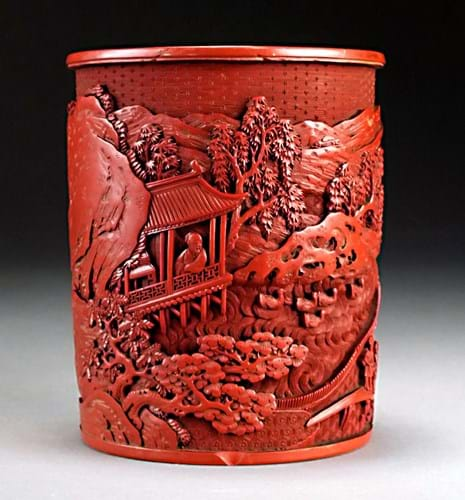A rare Chinese imperial doucai jar and cover was the top lot of Woolley & Wallis’ (25% buyer’s premium) Asian art sale on November 15 after it was hammered down at £820,000 to a Chinese buyer on the phone.
The jar came from a British private collection and the base had a paper label for Bluett & Sons in London where it was purchased in May 1946 for £9 10 shillings.
The 4in (10.4cm) high jar was painted in underglaze blue with two scaly yinglong (winged dragons) in flight amongst scrolling clouds. A band of scalloped lappets to the shoulder and foot were embellished with doucai enamels.
Estimated at £100,000-200,000, the final price made a significant contribution to the sale’s overall hammer total which was just over £3m.
The sale also posted a £50,000 hammer price for Chinese enamel vase which was estimated at £30,000-50,000. The vendor had bought it for £10 at a car boot sale.
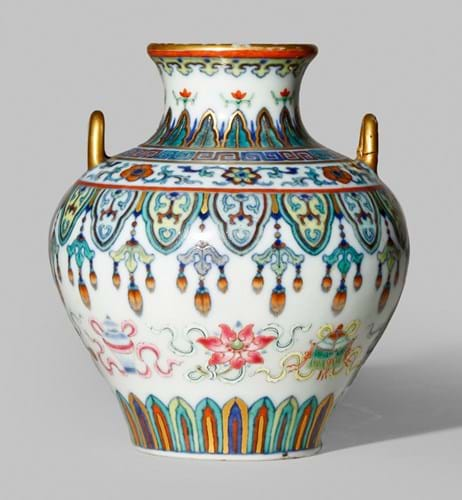
A Chinese doucai ovoid vase painted with Buddhist emblems that sold for £320,000 at Woolley & Wallis.
One of the biggest surprises of the sale was a small Chinese doucai ovoid vase painted with Buddhist emblems beneath bands of formal lappets, pendants, flowers and leaves. It was consigned by a Dorset source.
With a six-character Qianlong mark, the 4.75in (12cm) high case drew plenty of interest against a £2000-3000 estimate and was eventually knocked down at £320,000.
As part of the series of Asian art auctions taking place around the country, Sworders of Stansted Mountfitchet offered an exceptional rhinoceros horn libation cup from the late Ming period c.1600 on November 8 that sold for £200,000 (plus 20% premium).
Estimated at £30,000-50,000, it went to a Chinese buyer in the room after competition with 10 phone bidders.
Unusually large at 7½in (19cm) wide, it is superbly carved in the round with a literatus-idealised landscape and to the bowl with a chilong eyeing the tail end of a dragon. The hardwood stand, pierced and carved as high rocks with pine and lingzhi, was possibly the original.
Such items can only be exported under highly restricted conditions.
The following day, a cinnabar lacquer brush pot sold for £155,000 (plus 20% buyer’s premium) at Halls of Shrewsbury.
Estimated at £20,000-40,000, the 5in (12cm) vessel from the Qianlong (1735-96) or Jiaqing (1796-1820) period was finely carved with a scene of the 3rd century calligrapher Wang Xizhi contemplating geese in a pond.
The subject was a favourite of the Qianlong emperor and appears on other works of art including a seemingly identical lacquer brush pot which can be found in the collection of the National Palace Museum in Taipei.
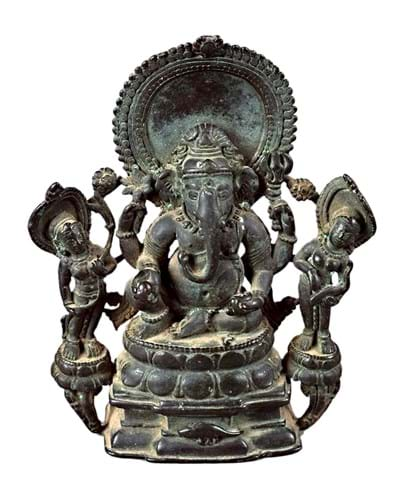
A small Indian bronze figure of Ganesh that sold for £114,000 at Special Auction Services. It is now thought to date from the 13th or 14th century.
In Newbury, a small Indian bronze brought to Special Auction Services in a woman’s handbag set a new house record when it sold at £114,000 (plus 18% buyer’s premium) on November 10.
The 6in (15cm) figure of Ganesh flanked by two figures on a lotus base, above right, had been estimated at just £100-200.
The vendor’s father had acquired it in the mid-20th century while serving in the merchant navy.
It is now thought to have been 13th or 14th century. It went to a member of the London trade bidding on the phone against an opponent from the US.
Indian Gouaches
Elsewhere around the country, a group of nine Indian Company School gouaches from c.1820 drew spectacular competition at Dreweatts & Bloomsbury Auctions on November 15. Offered in their Chinese Ceramics and Asian Works of Art sale, the group were consigned by a descendant of Sir Holburt Jacob Waring, who had received them from the son of Maharaja Chandra Shamsher Rana, the hereditary Prime Minister of Nepal.
Estimated at £4000-8000, they attracted strong interest and were eventually knocked down at £105,000 to a UK dealer.
Overall, the Dreweatts & Bloomsbury sale generated £838,451 (including pemium) from 309 lots.

